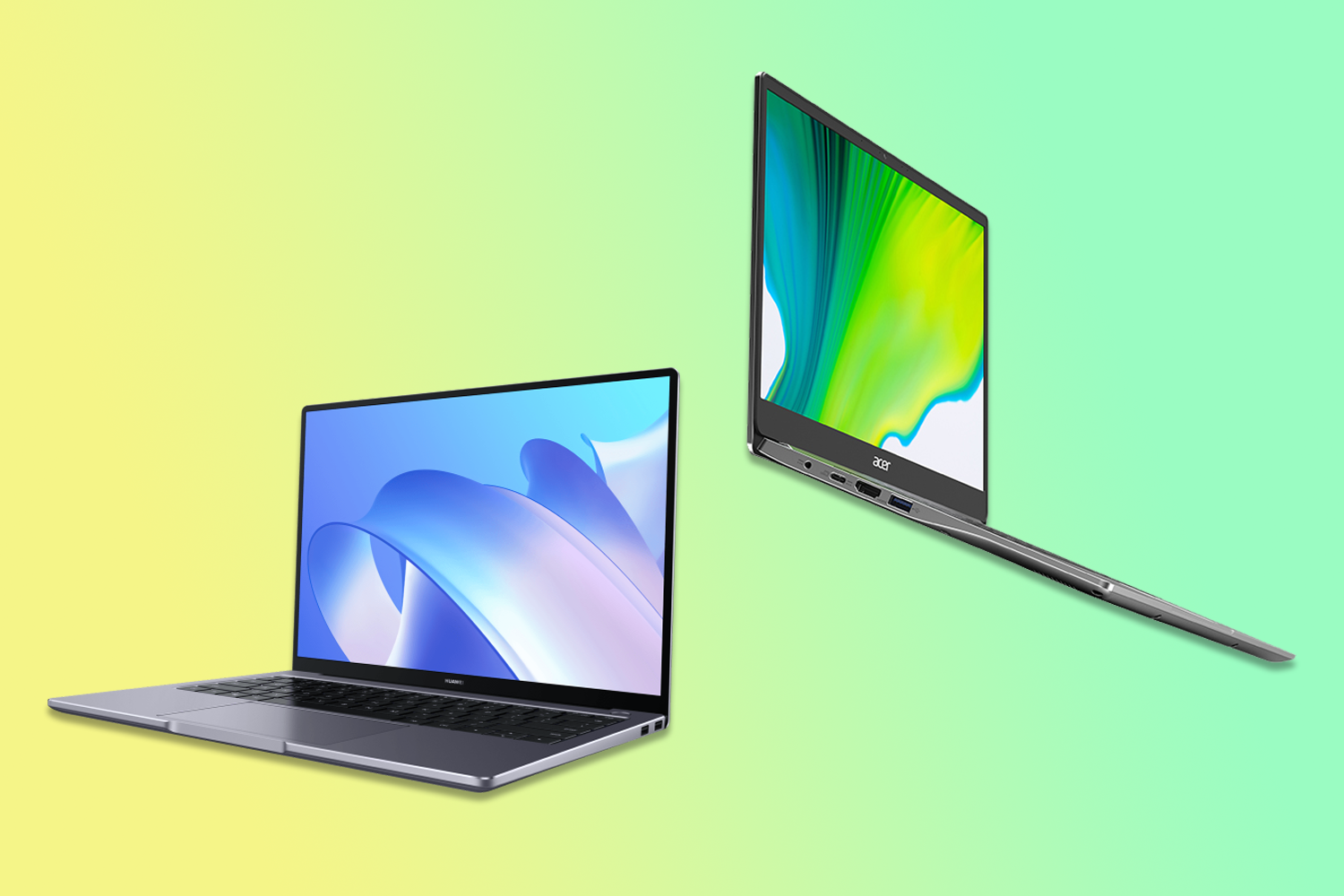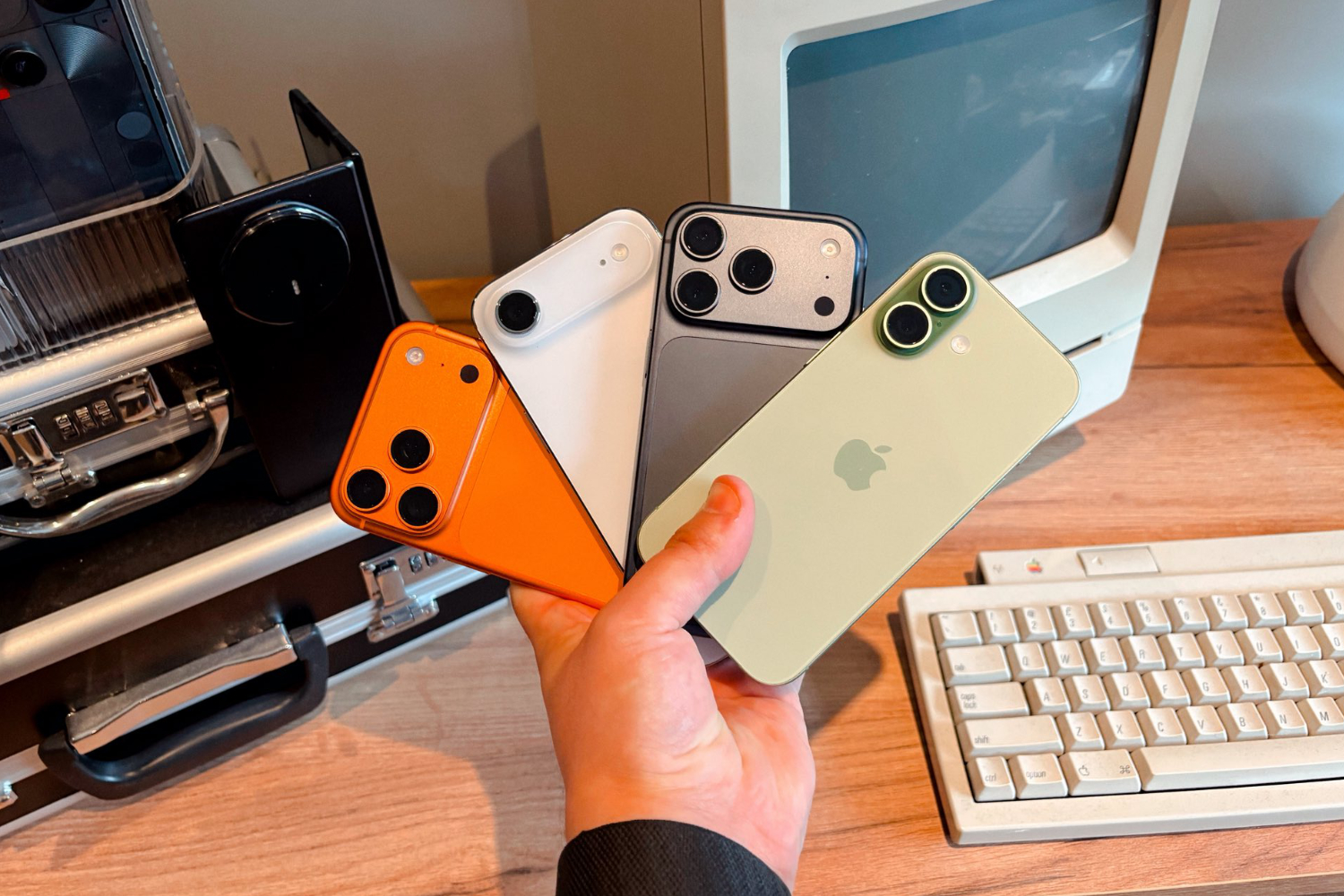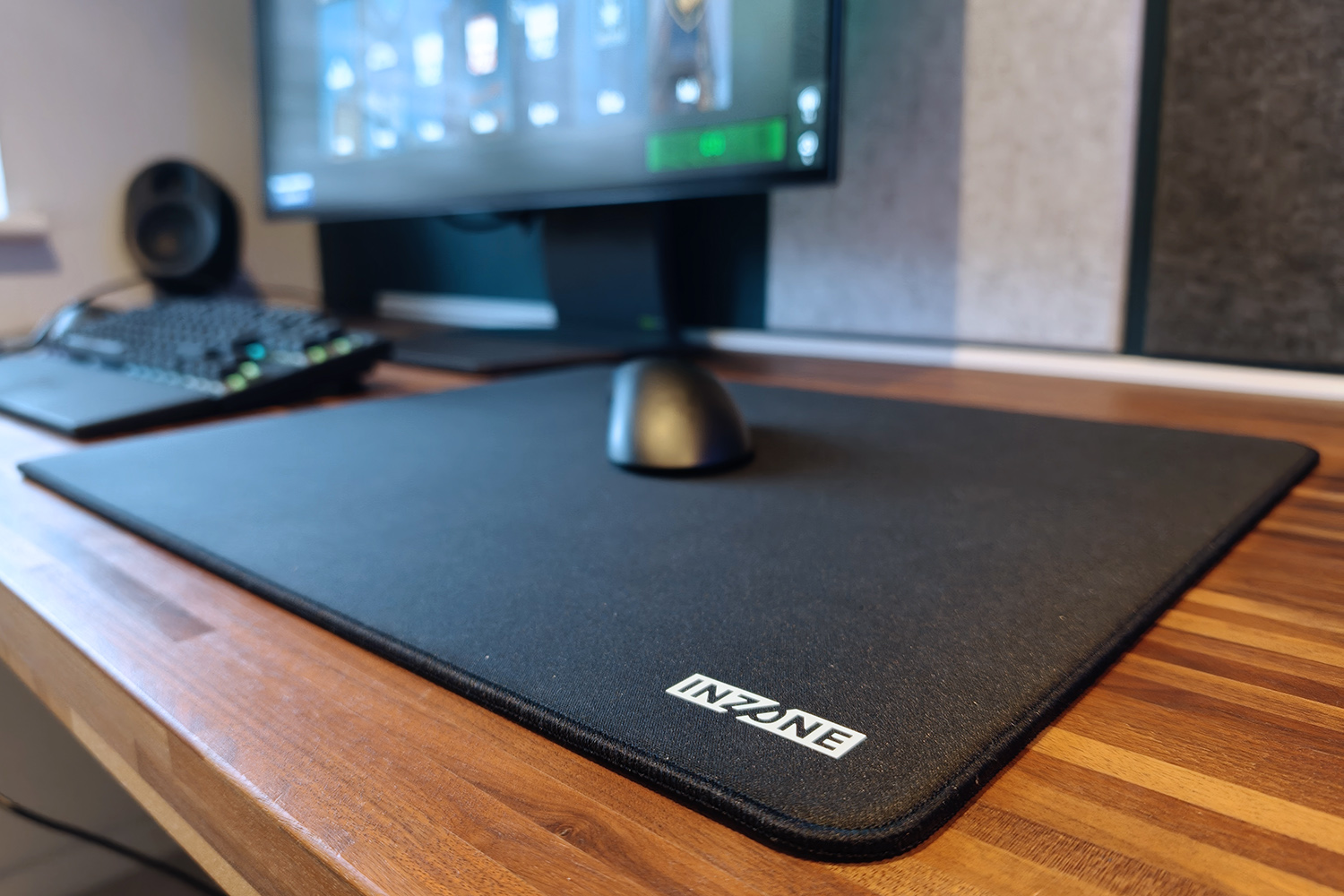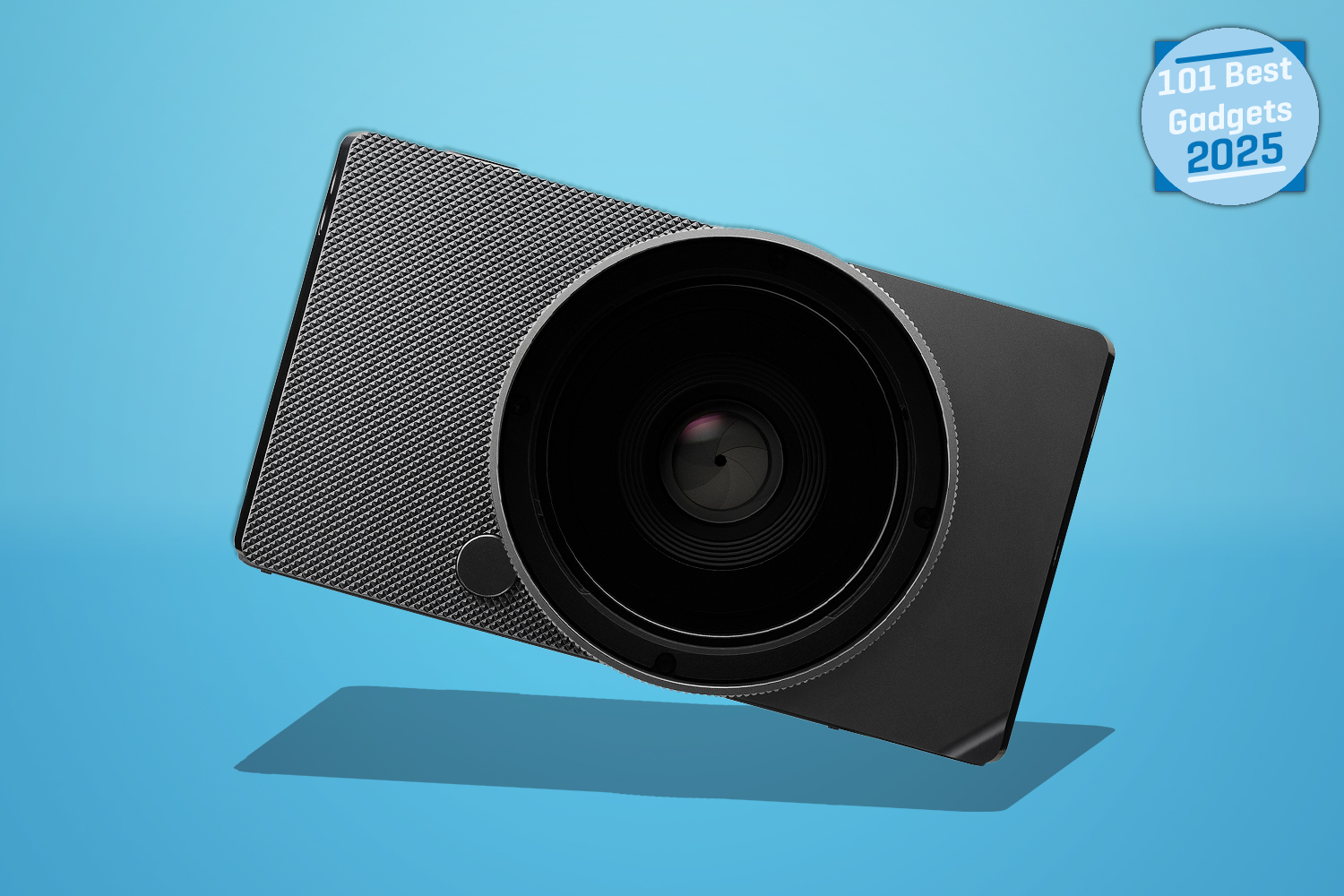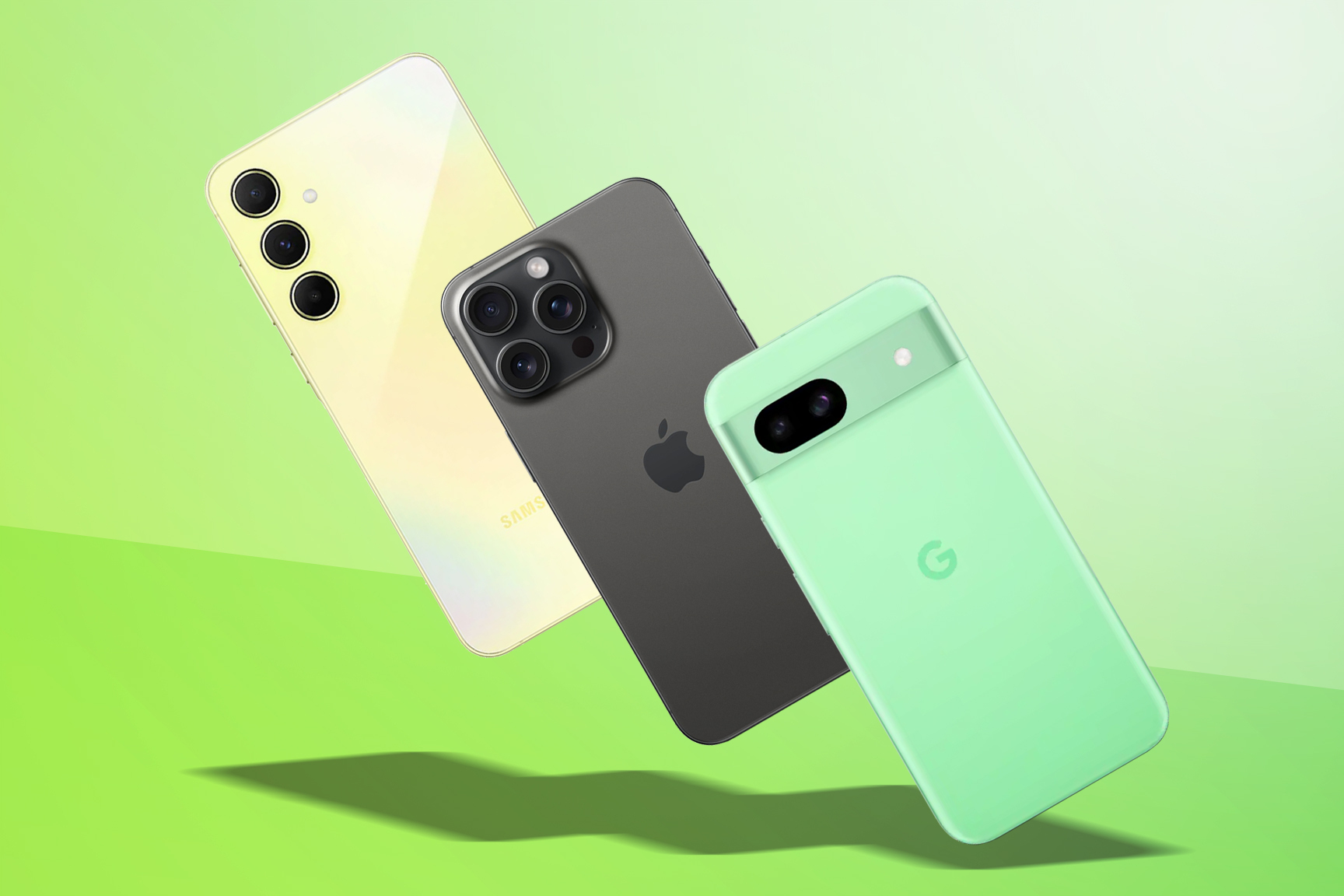Looking to buy the best mid-range laptop? It’s a smart move. Why splurge over a grand on a machine if you won’t fully utilise all its premium features?
Like mid-range phones, mid-range laptops once meant compromises in performance and speed, but fortunately, technology has come a long way. Today, you can find sleek, fast notebooks for around US$700 / £700 or less, offering more than enough power to handle both work and entertainment. In other words, unless you’re after the ultimate gaming laptop or need a high-end laptop for video rendering, opting for a well-priced laptop with impressive – though not cutting-edge – specs is likely the best choice.
That said, the sheer number of laptops on the market can be overwhelming. With so many options, choosing the right one can feel like a daunting task. That’s where we come in. We’ve sifted through countless models to bring you a curated list of the best mid-range laptops available today. And if you’re not limited by budget, be sure to check out Stuff’s guide to the best laptops as well.
Why you can trust Stuff: Our team of experts rigorously test each product and provide honest, unbiased reviews to help you make informed decisions. For more details, read how we test and rate products.
Quick list: what’s the best mid-range laptop?
The best mid-range laptops you can buy today:
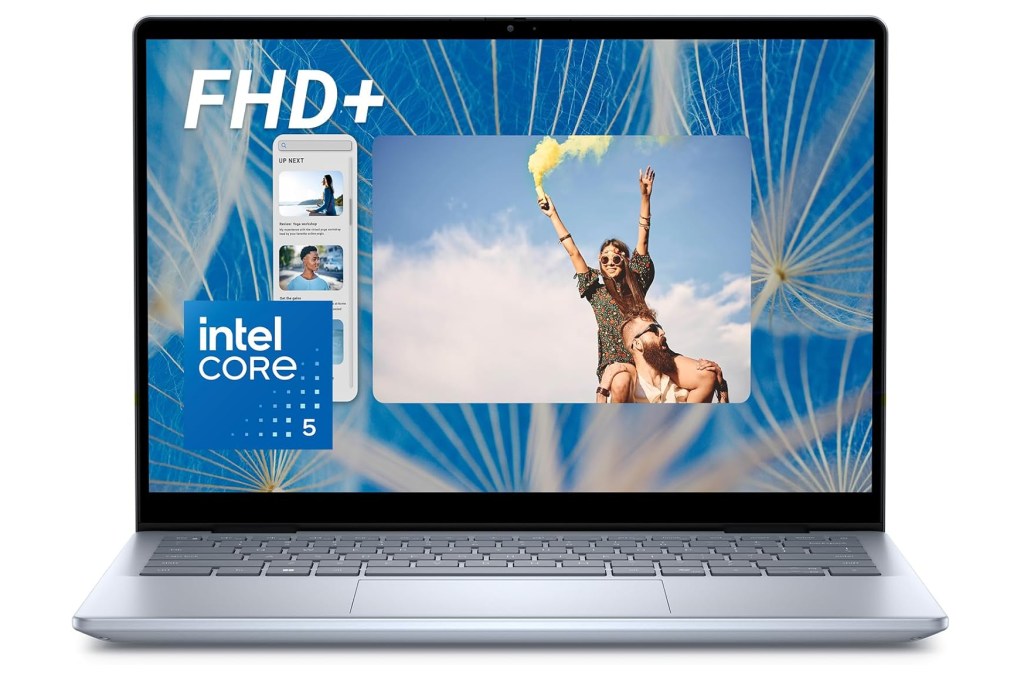
1. Dell Inspiron 14 2-in-1
| Dell Inspiron 14 specs | |
|---|---|
| Screen | 14in FHD+ 1920×1200 Touchscreen |
| Processor | Intel Core i7 |
| Graphics | Intel Integrated Graphics |
| RAM | 16 GB DDR5 |
| Storage | 1 TB SSD |
| OS | Windows 11 Home |
| Dimensions | 22.61 x 31.4 x 1.73 cm |
| Weight | 1.75 kg |
When we think about flexibility and performance on a budget, the Dell Inspiron 14 2-in-1 ticks many boxes. Its convertible design is perfect for those who want one device to handle work, entertainment, and creativity. Switching between laptop and tablet modes feels seamless, and the Full HD touchscreen enhances its versatility, whether for streaming, drawing, or presentations.
The Intel Core i7 processor and 16GB of RAM handle day-to-day productivity tasks and multitasking with ease, making it a great option for students, professionals, or families.
However, it’s not perfect. The added weight from its 2-in-1 design can make it less portable than traditional tablets. Additionally, while it excels at general tasks, the lack of a dedicated GPU limits its appeal for gamers or those working on graphics-heavy projects.
Overall, we see the Inspiron 14 as an excellent all-rounder. It’s ideal for those who want a multi-purpose device at an affordable price, and its performance makes it a dependable companion for work and play. If portability and gaming aren’t your top priorities, this laptop is a strong contender in the mid-range market.
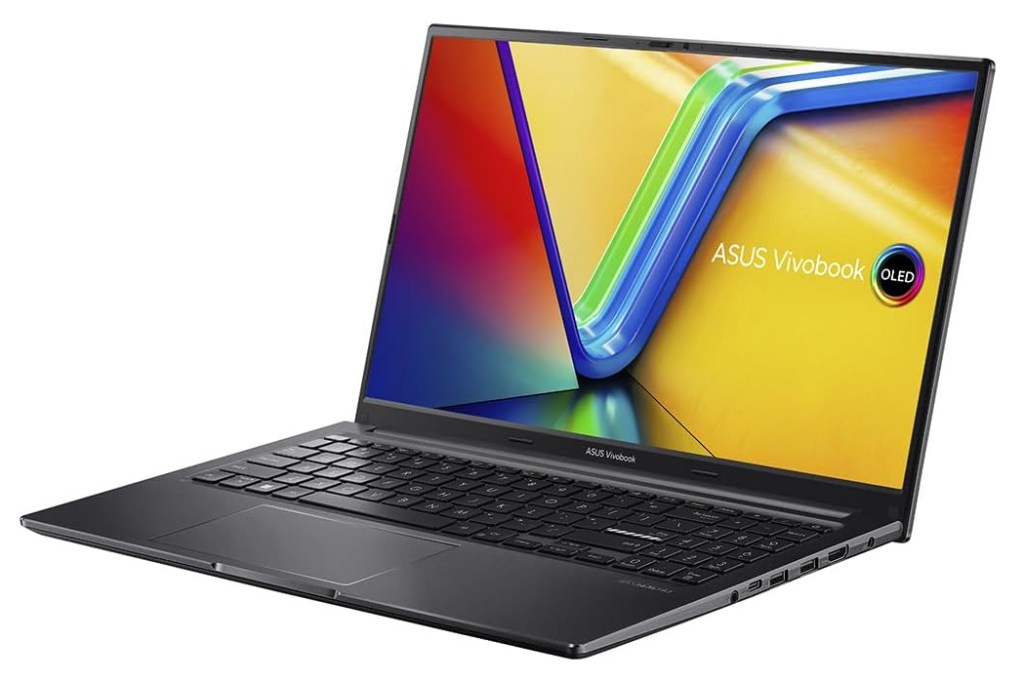

2. ASUS VivoBook 15
| ASUS VivoBook 15 specs | |
|---|---|
| Screen | 15.6in Full HD OLED |
| Processor | Intel Core i5 |
| Graphics | Integrated |
| RAM | 6GB RAM |
| Storage | 1TB SSD |
| OS | Windows 11 Home |
| Dimensions | 35.68 x 1.99 x 22.76 cm |
| Weight | 1.7 kg |
The ASUS VivoBook 15 M515 strikes a great balance between portability and performance for its price. Its lightweight design and slim profile make it ideal for students or professionals who are always on the go. The 15.6-inch Full HD display offers good visuals for work or streaming, and the 16GB RAM is a standout feature at this price point. It ensures that juggling multiple applications or browser tabs is a breeze.
That said, we found the build quality a bit underwhelming, as the plastic chassis doesn’t feel as sturdy or premium as some competitors. Additionally, the absence of a dedicated GPU makes it less appealing for gamers or users with heavy graphical needs.
Overall, we see the VivoBook 15 as a practical and affordable choice for those focused on productivity, browsing, and general use. It’s not designed for gaming or creative work, but for everyday tasks, it’s reliable and efficient. If you value portability and multitasking performance over premium materials or specialised capabilities, the VivoBook 15 is a smart choice.
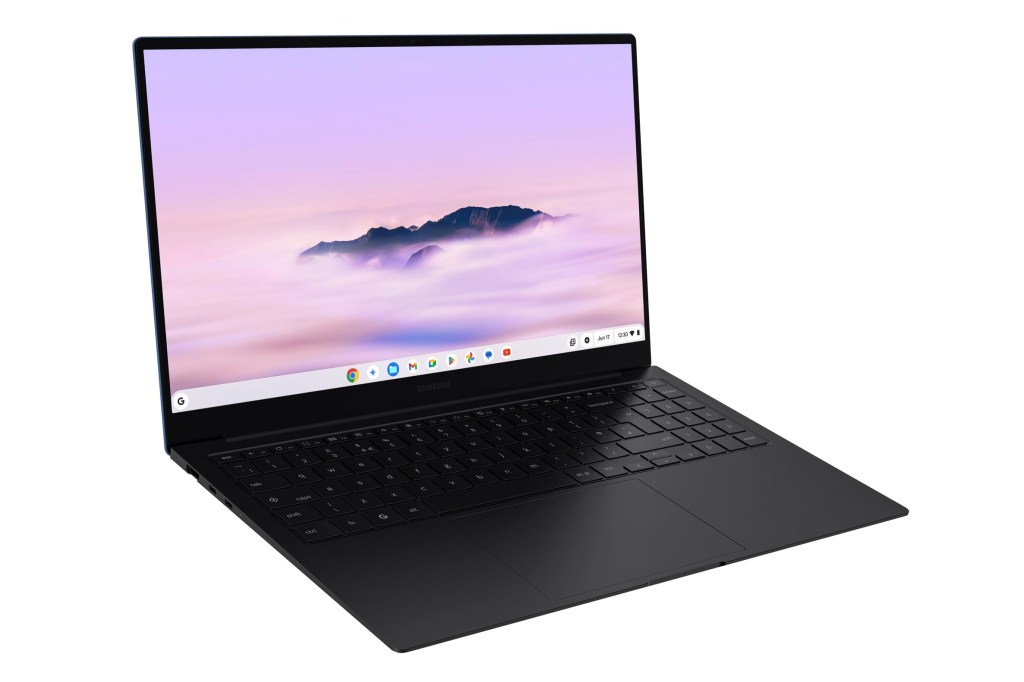

3. Samsung Galaxy Chromebook Plus
| Samsung Galaxy Chromebook Plus specs | |
|---|---|
| Screen | 15.6in Full HD AMOLED |
| Processor | Intel Core 5 |
| Graphics | Intel Graphics |
| RAM | 8 GB |
| Storage | 256 GB |
| OS | Chrome OS |
| Dimensions | 1.18 x 35.5 x 22.5 cm |
| Weight | 1.17 kg |
The Samsung Galaxy Chromebook Plus is a sleek, lightweight device that’s perfect for users who value portability and simplicity. Its AMOLED display is one of the best in its class, delivering stunning visuals for streaming, browsing, and casual productivity tasks. As a Chromebook, it’s optimised for the Google ecosystem, so apps like Gmail, Google Docs, and Drive run seamlessly, making it an excellent choice for students, remote workers, or anyone who spends most of their time online.
However, there are clear limitations. The storage is on the smaller side, which may require reliance on cloud storage or external drives. ChromeOS is great for web-based applications, but it’s not ideal if you need to run heavy-duty software like video editing suites or certain professional tools.
We think the Galaxy Chromebook Plus is a fantastic option for those who prioritise style, portability, and ease of use over raw power. If your workflow revolves around web-based tasks and you’re comfortable with ChromeOS, this device is an excellent companion. For more intensive workloads, though, a Windows laptop or traditional Chromebook with more storage might be a better fit.
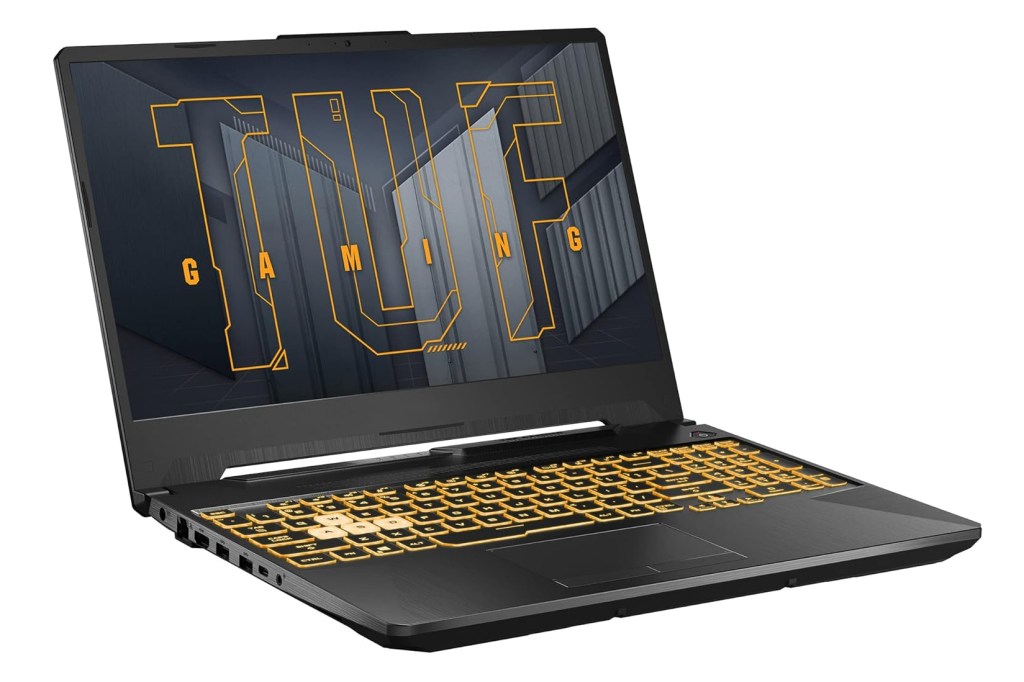

4. ASUS TUF F15
| ASUS TUF F15 specs | |
|---|---|
| Screen | 15.6in Full HD IPS 144Hz |
| Processor | Intel Core i5 |
| Graphics | Nvidia GeForce RTX 3050 GPU |
| RAM | 8GB DDR4 |
| Storage | 512GB SSD |
| OS | Windows 10 |
| Dimensions | 49.4 x 38.6 x 18.5 cm |
| Weight | 2.3 kg |
When it comes to budget-friendly gaming laptops, the ASUS TUF F15 stands out for its impressive durability and gaming performance. The 144Hz refresh rate is a huge plus, delivering buttery-smooth visuals that make fast-paced games like first-person shooters or racing titles much more enjoyable. The military-grade durability means this laptop can handle the occasional bumps and knocks that come with travel or daily use.
However, we need to address its downsides. The TUF F15 is heavier and bulkier than most laptops in this price range, making it less ideal for frequent travellers. Additionally, the storage space feels limited, especially for gamers who need room for large game files and updates.
Overall, we think this laptop is an excellent choice for gamers prioritising performance and durability over portability. While it’s not the most travel-friendly device, its robust build and gaming-oriented features make it well worth the price. For someone looking for a reliable and affordable gaming machine that won’t crack under pressure, the ASUS TUF F15 is a strong contender.
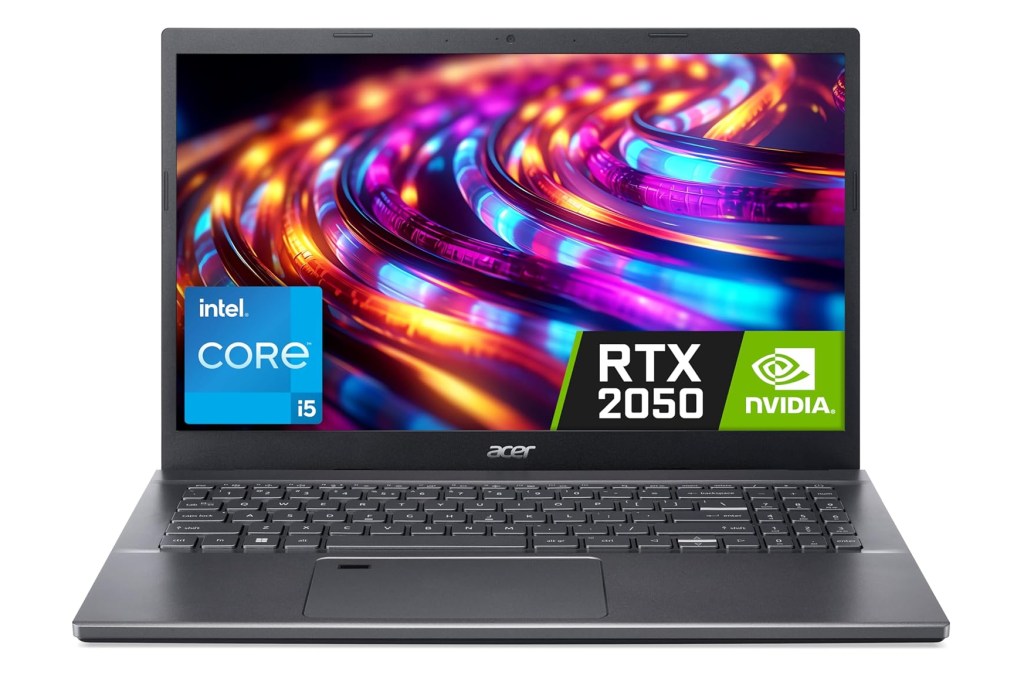

5. Acer Aspire 5
| Acer Aspire 5 specs | |
|---|---|
| Screen | 15.6in Full HD IPS display |
| Processor | Intel Core i5 |
| Graphics | NVIDIA GeForce RTX 2050 |
| RAM | 16GB DDR4 |
| Storage | 512GB SSD |
| OS | Windows 11 |
| Dimensions | 36.29 x 1.79 x 23.78 cm |
| Weight | 2.88 kg |
The Acer Aspire 5 is built for everyday users who want reliability without overspending. It offers just enough power for productivity tasks, casual gaming, and even some light photo or video editing. The Full HD IPS display ensures good visuals for work or entertainment, while the inclusion of the NVIDIA GeForce RTX 2050 GPU is a nice touch for the price point.
That said, the slightly older processor means it won’t keep up with demanding workloads or heavy multitasking as effortlessly as newer laptops. The battery life is another area where it could improve – long study or work sessions might need a charger close by.
Overall, we think the Aspire 5 is a solid choice for students, professionals, or families who need a dependable, versatile laptop that doesn’t break the bank. It’s not cutting-edge, but for around $700/£700, it’s hard to argue with the value it delivers. If you’re looking for something affordable that performs well across the board, the Aspire 5 definitely deserves a spot on your shortlist.
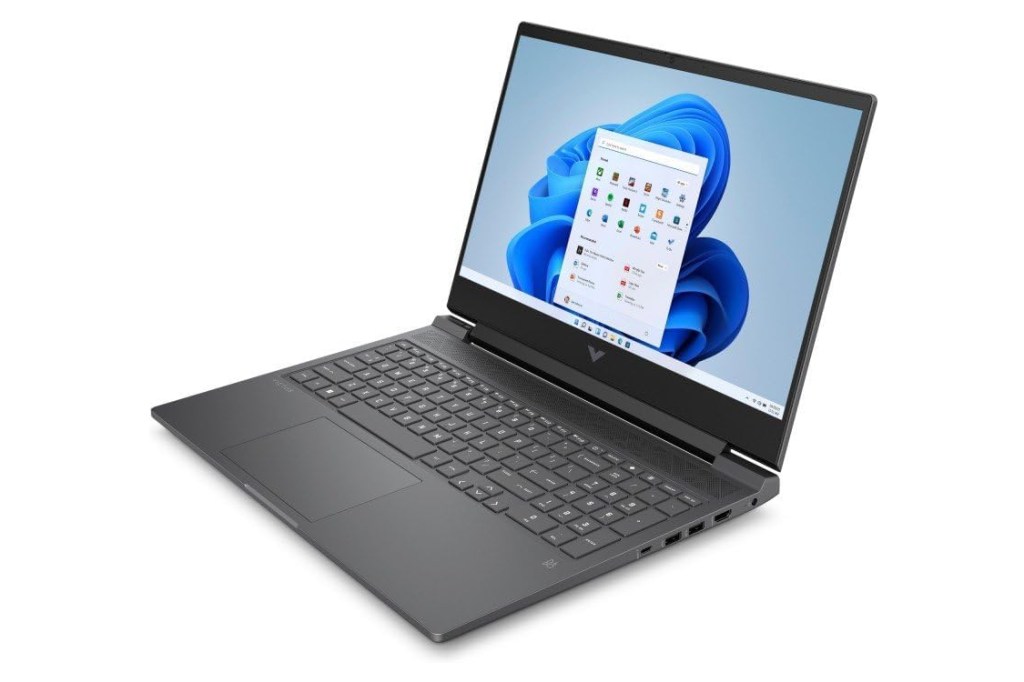

6. HP Victus 16
| HP Victus 16 specs | |
|---|---|
| Screen | 16.1in Full HD IPS 144Hz |
| Processor | AMD Ryzen 5 |
| Graphics | NVIDIA GeForce RTX 4050 |
| RAM | 16GB DDR5 |
| Storage | 1TB SSD |
| OS | Windows 11 Home |
| Dimensions | 36.9 x 25.94 x 2.29 cm |
| Weight | 2.31 kg |
The HP Victus 16 is a compelling option for budget-conscious gamers and multitaskers. The standout feature is its expansive 16.1-inch display, which is fantastic for gaming, streaming, or productivity tasks. Combined with the Ryzen 5 processor, it delivers solid performance for day-to-day tasks and more demanding games.
However, there are some drawbacks. The main one is that its larger size and weight make it less practical for those needing portability – it’s better suited as a desktop replacement.
We believe the Victus 16 excels for users who prioritise screen size and value over cutting-edge performance or portability. It’s perfect for gamers on a budget who don’t mind compromising on the latest hardware or travellers who mostly use their laptop in one location. For the price, it delivers a great experience, provided you know its limitations.
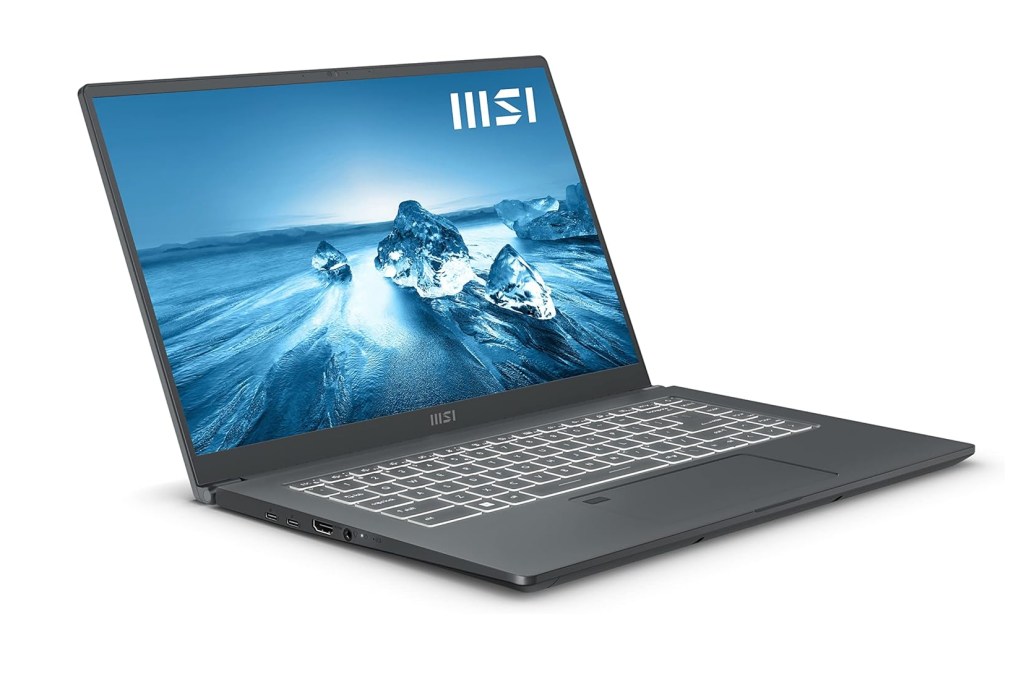

7. MSI Prestige 15
| MSI Prestige 15 specs | |
|---|---|
| Screen | 15.6inin Full HD |
| Processor | Intel i5 |
| Graphics | NVIDIA RTX 3050 Ti |
| RAM | 8GB LPDDR4 |
| Storage | 512GB |
| OS | Windows 11 |
| Dimensions | 35.4 x 23.4 x 1.89 cm |
| Weight | 1.69 kg |
The MSI Prestige 15 A12UD is a stylish and capable laptop for professionals who want a balance of performance and portability. Its sleek design is perfect for those who need a device that looks as good as it performs, whether in meetings or on the go. The inclusion of an RTX 3050 Ti GPU sets it apart in this price range, making it a strong contender for light gaming or creative applications like Photoshop and Premiere Pro.
However, the limited 8GB of RAM feels like a missed opportunity. Multitasking or running memory-intensive applications can lead to slower performance. Additionally, the battery life is subpar, meaning frequent charging is necessary if you’re working away from a power outlet.
We think the Prestige 15 shines as a portable workstation for professionals and students who need solid graphics performance in a compact package. It’s not perfect for heavy multitaskers or those who prioritise battery life, but for its price, it strikes a good balance between style and capability. If you’re looking for a laptop that’s lightweight and can handle moderate creative workloads, the Prestige 15 deserves a spot on your list.
How to choose the best mid-range laptop?
When buying the best mid-range laptop, one of the first things to consider is the balance between performance and price. Mid-range laptops are designed to offer more power and features than the best budget laptops, without the excessive cost of premium machines.
Look for a laptop that includes a solid processor, such as an Intel Core i5 or i7, or an AMD Ryzen 5 or 7. These processors offer a great combination of speed and efficiency, making them capable of handling everything from daily tasks to more demanding applications like photo editing or light gaming. RAM is also important; 8GB should be considered a minimum, but 16GB is preferable for smoother multitasking and future-proofing your device.
Another key aspect is the display. Mid-range laptops often come with higher resolution screens, and it’s worth opting for at least a Full HD (1920×1080) display. This will provide sharper images and a more comfortable viewing experience for work, entertainment, and gaming. If you plan to use your laptop for creative work or you value vibrant colours and deeper contrast, look for a display with good colour accuracy and brightness. Touchscreens and convertible designs, while not essential for everyone, can also add versatility, making a 2-in-1 laptop an attractive option for those who want a device that can function as both a laptop and a tablet.
Storage is another crucial factor. A mid-range laptop should come equipped with a solid-state drive (SSD) rather than a traditional hard drive (HDD), as SSDs offer much faster boot times and file access. A 512GB SSD is a good sweet spot, providing ample space for most users’ files and applications while ensuring the laptop remains responsive. If you anticipate needing more storage, some laptops offer options for expansion or external drives, so it’s worth considering future needs.
Battery life is also important; aim for a laptop that can last at least 8-10 hours on a single charge to avoid being tethered to an outlet throughout the day.
Lastly, consider the build quality and portability. Mid-range laptops can vary greatly in design and weight, so think about how and where you’ll use the laptop. A lightweight, slim model is ideal for those who travel frequently or work on the go. However, don’t sacrifice durability for portability—look for solid construction materials and a design that feels robust.






